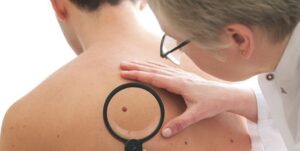PCOS affects 10% of women and is, along with endometriosis, one of the leading causes of infertility. However, for some patients, making a diagnosis is an obstacle course.
Table of Contents
PCOS affects 10% of women and is, along with endometriosis, one of the leading causes of infertility. However, for some patients, making a diagnosis is an obstacle course.
“At home, it manifests itself in hair loss, hirsutism [an excessive development of hairiness, note], mood swings with depressive episodes, and irregular menstrual cycles,” says Alice, 31. She was diagnosed in 2019 at age 29. PCOS affects 1 in 10 women worldwide – in fact, it affects more, between 15 and 20% of the female population.
PCOS is a hormonal dysfunction. “It is a primary ovarian disease, that is to say, that there is an excess of follicles [small cells contained in the ovaries, editor’s note] which are unable to evolve in their growth. They are blocked at early stages and lead to an excess of male hormones,” explains Virginie Castera, head of the endocrinology department at Saint-Joseph hospital in Marseille and a specialist in the syndrome. The overflow of these hormones, androgens, transforms sugars less well, and generally, weight gain accompanies this syndrome. In 70% of cases, young women are obese or overweight.
Excessive hair growth, acne, hair loss
The specialist continues: “It is a very debilitating pathology. It is not painful, like endometriosis, but it affects women of all ages. It begins in adolescence with menstrual disorders (until the absence of menstruation), acne, and heavy body hair. Around your thirties, menstrual irregularity and ovulation disorders can prevent you from getting pregnant. At maturity, this syndrome increases the prevalence of diabetes, which is linked to obesity and overweight and, in time, can lead to cardiovascular disease.
To make the diagnosis, two of the following three criteria must be met:
- menstrual irregularity,
- hyperandrogenism, i.e., excessive production of testosterone resulting in hypervelocity, acne and hair loss,
- An ultrasound appearance of polycystic ovaries, i.e., an excess of follicles on the ovaries, at least nineteen according to current criteria.
Fight against medical wandering.
Like endometriosis, the diagnosis of PCOS can be laborious to obtain. Sara, 27, testifies to this long medical wandering. In October 2018, she stopped taking the pill, which did not suit her and had an IUD inserted. During a medical visit for a pelvic ultrasound, her doctor reported ovarian cysts, “up to a dozen on one of my ovaries.” She is redirect to a specialist who tells her about polycystic ovary syndrome for the first time without worrying too much about it. And without making a diagnosis.
But be careful. It’s a binding drug. With good reason: it should not be run on the forehead, at the risk of seeing hairs appear there, and it must apply daily without interruption. Stopping it leads to further hair loss and a return to square one. I started to learn by reading testimonials from women in the same situation as me who had already test it. The majority of them said the same thing: drugs to flee absolutely. And then, it is expensive.
In the summer of 2022, she realizes she has an excellent start to balding. “It was starting to turn into an obsession. It worried me. I talked about it all the time. It isn’t easy to assume when you’re a woman, young. It’s a huge part of my identity and my femininity. It was very traumatic,” she describes. She then tries tinted powder to hide the holes and inquires about the hair implant. In October 2022, she consulted an endocrinologist who explained that there was nothing she could do. She prescribes him all the same, a drug usually administered for blood pressure problems. It has the side effect of hair growth, she explains to him. Not reassured, Sara decides never to take it.
“It is very hard to find a doctor sufficiently informed on the subject.”
Alice, 31, is suffering from PCOS.
“At the end of 2022, I cut my hair super short, boyish, she confides. I feel like I will never be the same again. I am depress.” Then, by cross-referencing the experiences of her mother and sister, both suffering from PCOS, she thought that a return to the pill might help her. At the beginning of 2021, she returns to see a gynecologist who again prescribes her old pill. “In two months, the difference is obvious. My holes were less visible, and my hair in better shape. And I settle again.” After three months and finally finding an attentive gynecologist, who knew how to adapt the dosage of her pill, she was finally diagnosed with pcos treatment pakistan. “Today, my hair is healthy again, I have no holes and my new pill looks much better on me.”
An obstacle course that will have lasted nearly four years. And a handful of specialists met, some of whom were not very empathetic or competent. “There are a lot of unanswered questions. You have to research to see the people who specialize in this. Otherwise, women are in a medical wandering, a diagnostic wandering, and an unsuitable treatment.
RECOMMENDED ARTICLE: Austin garage door repair supremegaragedoortx.com








Also read this blog: Best Digitalmarketing Agency
Also read this blog: Buy Fruit Plants Online in India At The Best Prices
car wash gas stations
Also read this blog: Latest trending news
Another 5G smartphone POCO M3 Pro 5G may be launch in India soon, but the company has not given any information about it yet. Recently this phone has been see on the Indian IMEI Database. It gets MediaTek Dimensity 700 SoC, 6GB RAM and up to 128GB storage.